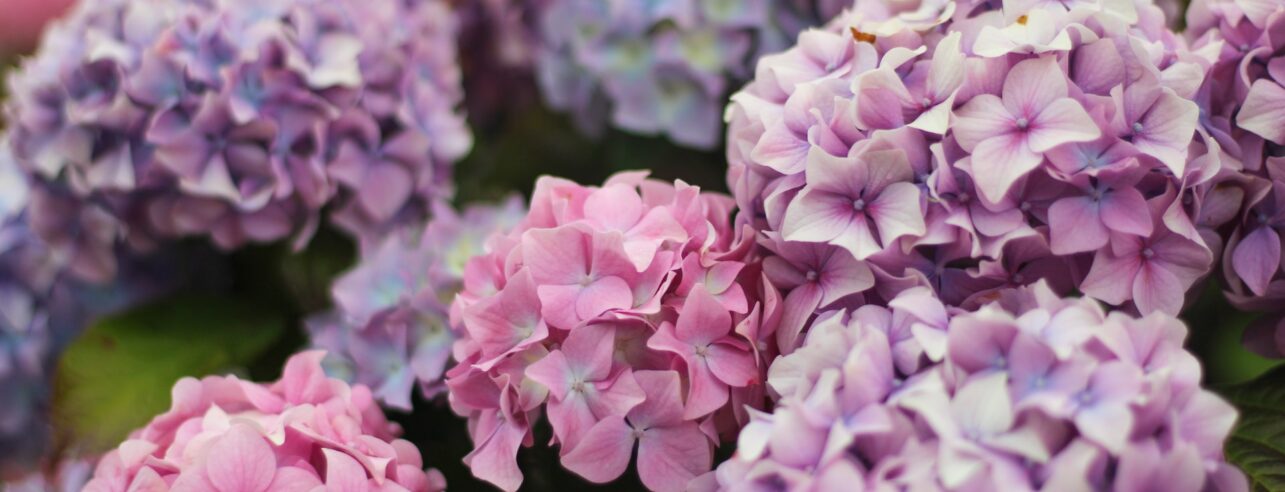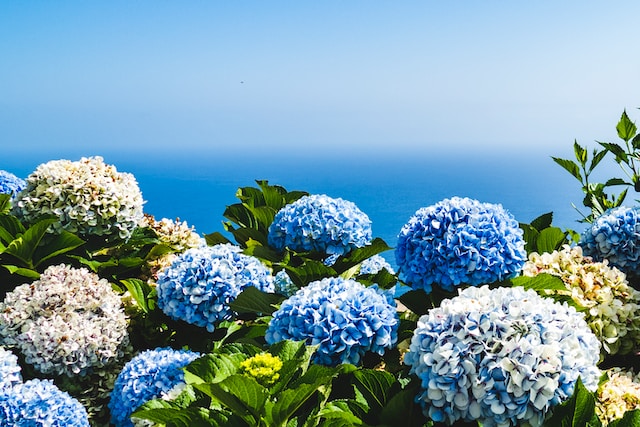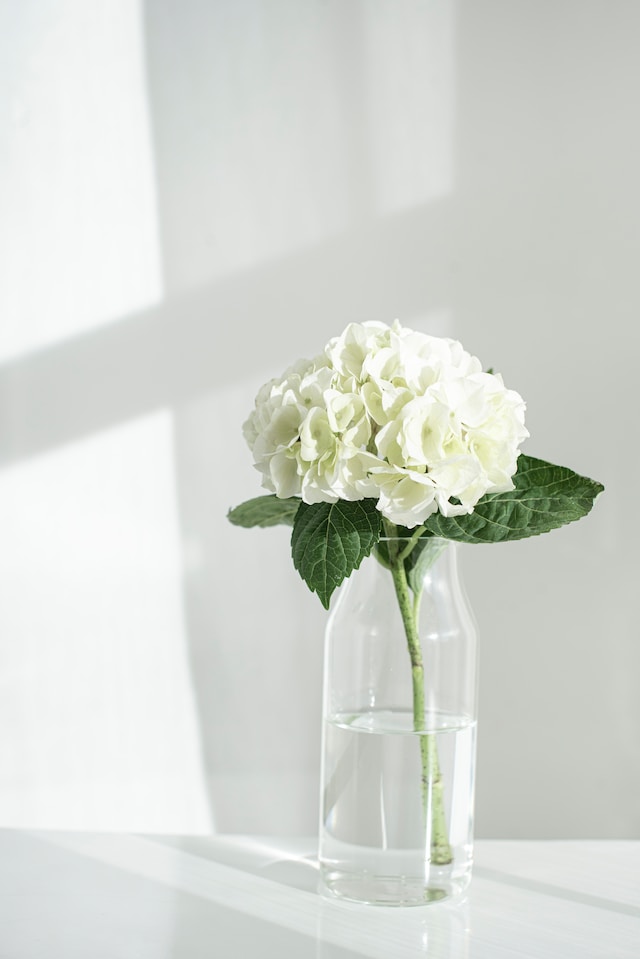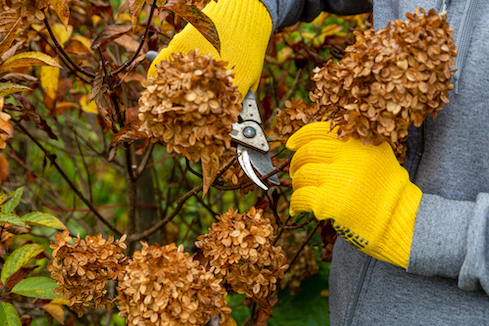Log in or create new account to save this product to your wishlist.

Pruning Hydrangeas 101: Everything You Need to Know for Beautiful Blooms
Hydrageas add beautiful structure to a garden's design, but it's essential to maintain them for best results. Find out how to prune your hydrangeas.
🌱 All important maintenance moments for your lawn during the year. Leave your email and we will send you the lawn calendar for free.
Enter your email
Receive the lawn calendar in the mail
Enjoy a green lawn all year round!

- Order by 2PM = shipped today
- 250.000+ satisfied customers!
- 60 day satisfaction guarantee
As a gardening enthusiast, I know how important it is to maintain the health and beauty of the plants in my garden. And one of my favourite plants to care for is the hydrangea. But how do you prune hydrangeas without them drooping?
- Introduction to Pruning Hydrangeas
- Why Pruning is Important for Hydrangeas
- When to Prune Hydrangeas
- How to Prune Hydrangeas – A Step-by-Step Guide
- Do’s and Don’ts of Pruning Hydrangeas
- What affects the colour of a hydrangea bloom?
- Tools Needed for Pruning Hydrangeas
- Tips for Maintaining Healthy and Beautiful Hydrangeas
- FAQs
- Ready to prune hydrangeas?
Hydrangeas produce beautiful, showy blooms that are sure to impress. However, to ensure that your hydrangeas continue to bloom year after year, it is crucial to know when and how to prune them.
In this article, I’ll share everything you need to know about pruning hydrangeas.
Introduction to Pruning Hydrangeas

Pruning is the process of cutting back a plant to promote new growth and improve its overall health. And when it comes to hydrangeas, pruning plays a critical role in ensuring that the plant produces beautiful blooms year after year.
Pruning hydrangeas can also help maintain the plant’s size and shape, which is particularly important if you are growing hydrangeas in a small space.
Why Pruning is Important for Hydrangeas
OK — so Madonna may “loathe” them, but most of the rest of us love those huge, bountiful blooms in rainbow colours that bring beauty and structural interest to our gardens.
However, hydrangeas can grow huge. So, pruning hydrangeas is essential for several reasons:
- Helps remove dead or diseased wood, which can prevent the spread of disease to other parts of the plant.
- Helps improve air and sunlight circulation, which are both essential for the health of the plant.
- Help promote new growth and encourage the plant to produce more blooms.
When to Prune Hydrangeas

The best time to prune hydrangeas depends on the variety of hydrangea.
Old Wood Hydrangeas
Hydrangeas that bloom on old wood (last year’s growth), such as the bigleaf hydrangea (Hydrangea macrophylla) or oakleaf hydrangea (Hydrangea quercifolia), should be pruned immediately once they’ve finished blooming.
This will give the plant enough time to produce new growth and set buds for next year’s blooms.
New Wood Hydrangeas
Hydrangeas that bloom on new wood (this year’s growth), such as the panicle hydrangea (Hydrangea paniculata) or smooth hydrangea (Hydrangea arborescens), can be pruned in late winter or early spring.
You can prune these types of hydrangeas back hard, as they will produce new growth and blooms on the current season’s growth.
How to Prune Hydrangeas – A Step-by-Step Guide

Pruning hydrangeas may seem intimidating, but it’s actually relatively simple.
Here’s a step-by-step guide:
- Remove dead or diseased wood from the plant. This will help prevent disease and ensure the plant looks healthy.
- Remove weak or crossing branches. These branches can rub against each other, causing damage to the plant and preventing proper air circulation.
- For bigleaf and oakleaf hydrangeas, remove about one-third of the oldest stems at ground level. This will encourage the plant to produce new growth and set buds for next year’s blooms.
- For panicle and smooth hydrangeas, prune the plant back to about 12 inches from the ground. This will encourage the plant to produce new growth and blooms on the current season’s growth.
- Remove dead flower heads to improve the plant’s appearance and promote new growth.
Do’s and Don’ts of Pruning Hydrangeas
When pruning hydrangeas, there are a few do’s and don’ts to keep in mind.
DO:
- Prune at the right time of year for your specific hydrangea type
- Use sharp, clean pruning shears to prevent damage to the plant
- Cut back to a healthy bud or branch to promote new growth
- Remove any dead or diseased wood to prevent the spread of disease
- Remove any weak or crossing branches to improve air circulation
DON’T:
- Prune too late in the season, as this can remove next year’s buds
- Use dull or dirty pruning shears, as this can damage the plant
- Prune too much, as this can stunt the plant’s growth and reduce blooming
What affects the colour of a hydrangea bloom?

You could be mistaken in thinking that the colour of your hydrangea bloom relies on the specific variety of the plant. But you might be surprised to discover that that’s not the case.
The colour of a hydrangea is affected by the pH level of the soil it grows in.
Yes, you read that correctly.
Acidic soil (pH lower than 6.0) produces blue or lavender-blue hydrangea blooms, while alkaline soil, with a pH above 7.0, promotes pinks.
Some gardeners have reported success in turning their hydrangeas blue by applying coffee grounds to the soil, as they make the soil more acidic.
Additionally, some bigleaf hydrangeas can change flower colours from pink to blue, or vice versa, based on the availability of aluminium ions in the soil.
Every day’s a school day!
Tools Needed for Pruning Hydrangeas
To prune hydrangeas, you will need a few essential tools. These include:
- Sharp pruning shears or loppers
- Gardening gloves
- Safety glasses
- Disinfectant spray or rubbing alcohol (to clean pruning shears)
Tips for Maintaining Healthy and Beautiful Hydrangeas
Pruning is just one aspect of hydrangea care.
Here are some extra tips to help you maintain healthy and beautiful hydrangeas:
- Water regularly, especially during hot and dry weather
- Fertilize in the spring with a balanced feed
- Mulch around the plant’s base to help retain moisture and suppress weeds
- Provide partial shade during the hottest part of the day
- Monitor for pests and diseases and take action as needed
FAQs
The best time to prune hydrangeas depends on the type of hydrangea you have. Prune hydrangeas that bloom on old wood immediately after it finishes blooming. Prune in late winter or early spring for hydrangeas that bloom on new wood.
To prevent hydrangeas from drooping after pruning, make sure to prune at the right time of year and avoid pruning too much. Water regularly and provide partial shade during the hottest part of the day.
Yes, you should cut hydrangeas back to promote new growth and improve the plant’s overall health. However, it is crucial to prune at the right time of year and avoid pruning too much.
Ready to prune hydrangeas?
Pruning hydrangeas is a crucial aspect of plant care that can help promote new growth, improve air circulation and sunlight exposure, and encourage the plant to produce more blooms.
By following the tips and techniques outlined in this article, you can ensure that your hydrangeas remain healthy and beautiful year after year. Remember to prune at the right time of year, use sharp and clean pruning shears, and avoid common pruning mistakes.
With a little care and attention, your hydrangeas will continue to impress for years to come.
Happy pruning!
-
Orchids: A Complete Guide on How to Care for ThemWant to give your orchid the best possible care? Discover essential tips from placement to watering and pruning. Learn everything you need to know!Read more
-
Growing Wisteria Made Simple: From Planting to Perfect BloomsWith blossoms like a purple waterfall, Wisteria sets an almost magical and colourful mood. If you want to grow this beauty in your garden, you’ll need a bit of patience. Don’t worry, it will most definitely pay off.Read more
-
How to Build a DIY Greenhouse: A Practical Guide for Smart SpendersImagine extending your growing season throughout the year, nurturing tender plants regardless of the weather, and creating a personal garden sanctuary. This is precisely what a DIY greenhouse offers you. Let’s learn how to build one.Read more
-
How to Grow Eucalyptus in British GardensWith a little love and care, eucalyptus trees can thrive in English gardens. Since they don’t germinate well without proper help, there are not considered invasive. So, there is no reason not to plant them if you enjoy their looks.Read more
-
Transform Your Garden with All-Year-Round Flowering PlantsDid you know you can enjoy blooming flowers even in January? With the right selection of all year round plants, there’s no need to wait until spring to add some colour to your garden.Read more
-
How to Create a Butterfly Garden: A Simple Guide for British GardensThe UK's butterfly population includes 59 different species. These beautiful winged creatures face a steady decline because of habitat loss, pollution and changing weather patterns. Your garden can become a vital link between nature reserves and natural habitats. Let’s explore how.Read more
-
Volcanic Rock Dust for Your Garden—Application and TipsDid you know that volcanic rock dust is a brilliant organic soil improver? This article explains exactly what it's good for and how to use it properly.Read more
-
How to Use Landscape Fabric ProperlyIf weeds or erosion in your garden are troubling you, landscape fabric might be the solution. We’ll explain how and when to use it properly, just keep on reading.Read more
Leave a comment
Your answer will be displayed on the site and the interested party will be notified by email.
Leave a comment
Have a question or want to share your experience? Leave us a comment.

- Order by 2PM = shipped today
- 250.000+ satisfied customers!
- 60 day satisfaction guarantee

- Order by 2PM = shipped today
- 250.000+ satisfied customers!
- 60 day satisfaction guarantee

🌱 All important maintenance moments for your lawn during the year. Leave your email and we will send you the lawn calendar for free.
Enter your email
Receive the lawn calendar in the mail
Enjoy a green lawn all year round!






















Comments (0)
There are no comments yet. Well then, what are you waiting for to
Be the first to write your comment!inaugurate this pretty page?
Do you have some comments?